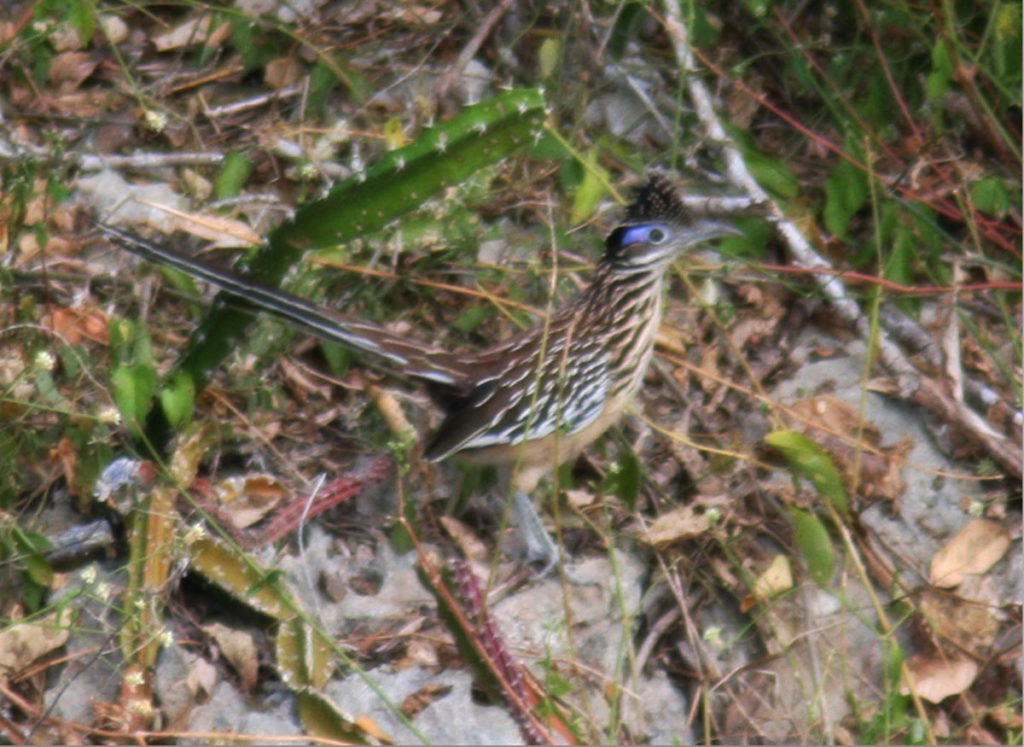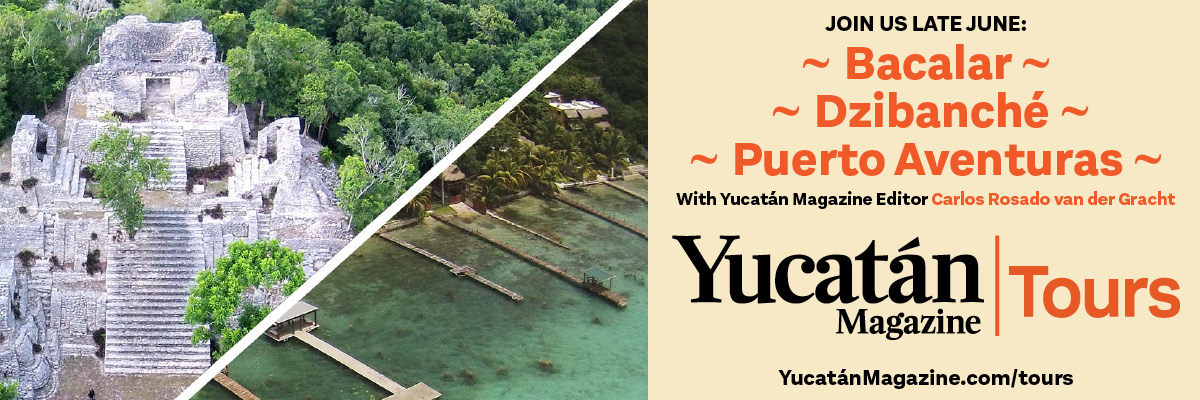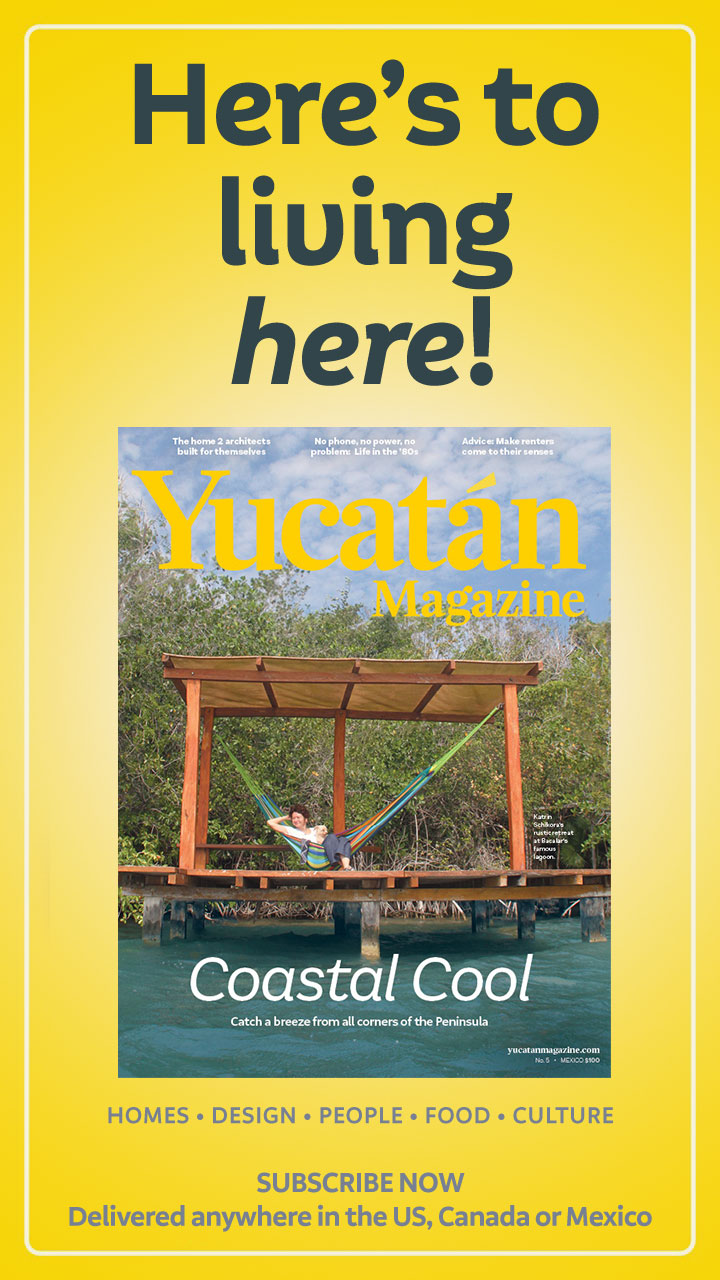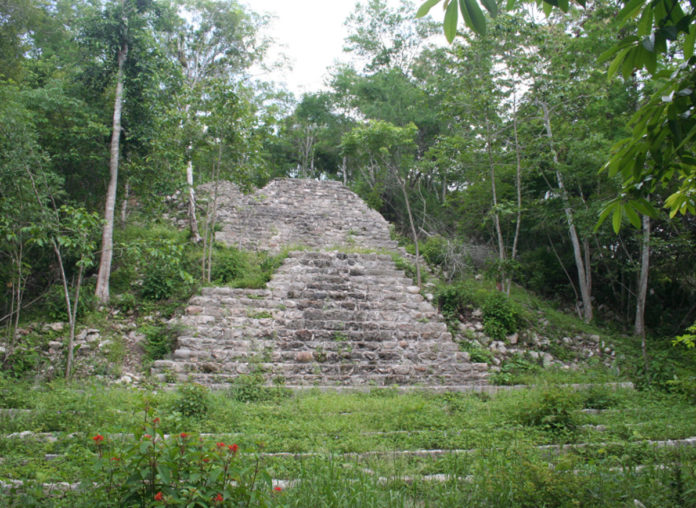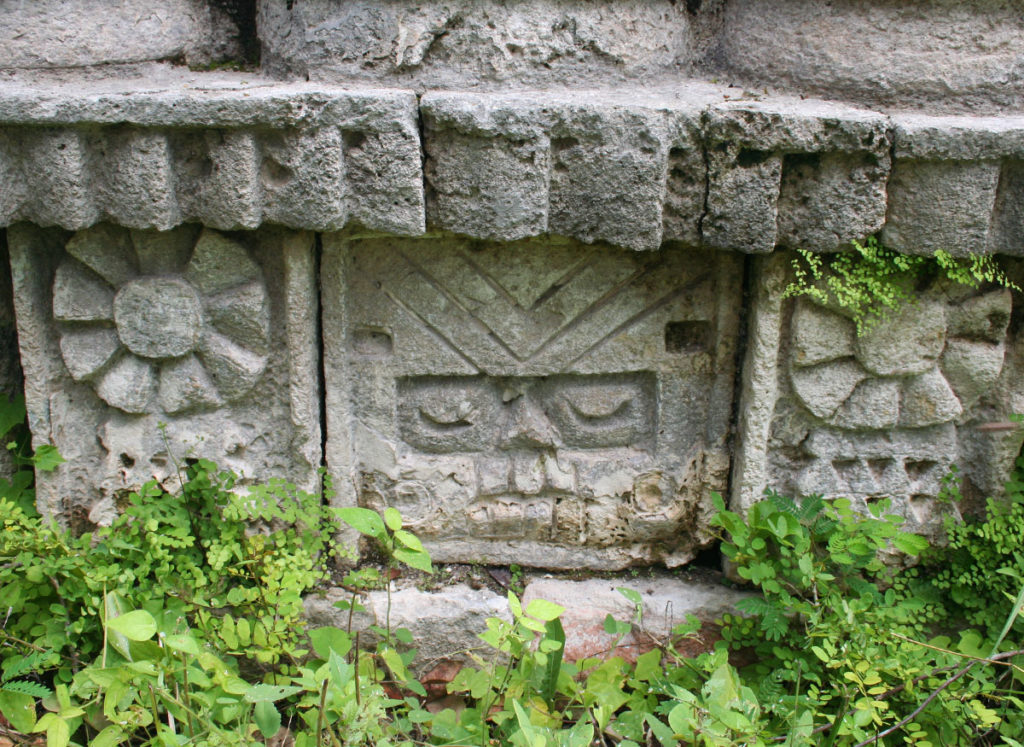
When traveling east on the Mérida-Valladolid toll-free highway, about 20 kilometers before reaching Pisté, some disheveled old signs point you in the direction of the archaeological site of Yaxuná, Yucatán.
The small towns you will pass on your way are beautiful, though a little run down. The area is full of old haciendas, cenotes, and colonial churches that are worth a visit in their own right.
Following the signs, you will arrive at a little dirt road. Pay attention to your surroundings and you are sure to spot huge pyramids completely covered in vegetation. After a few kilometers, you will have arrived. Although the Yaxuná has no amenities at all and can sometimes be difficult to traverse, it offers a real sense of adventure and discovery. It may not be the 19th century, and you are certainly not John Lloyd Stephens, but it’s fun to pretend.
In Yucatec-Maya, Yaxuná (sometimes spelled Yaxunah) means “first house” or “turquoise house.”
Unlike all the other ancient Mayan cities we have covered so far on Archaeology Monday, Yaxuná is not continuously maintained by Mexico’s Institute of History and Anthropology, INAH. So, your experience at the site may vary, depending on how easy it is to navigate through the vegetation.
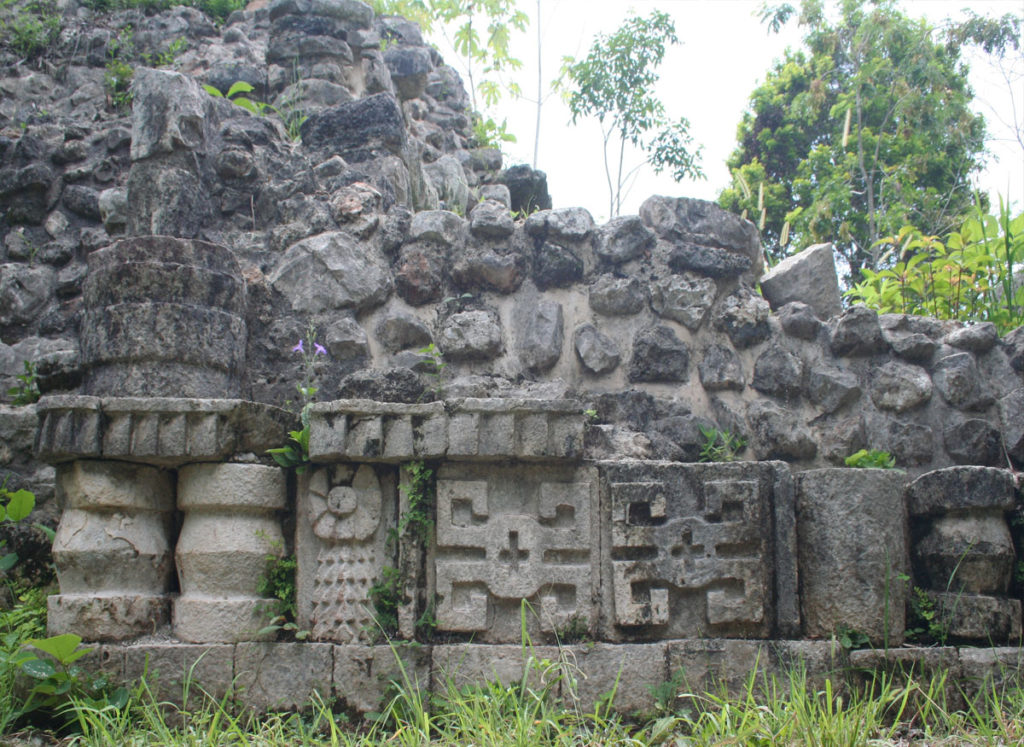
If the growth around the site’s core becomes too dense, locals who rent out small eco-cabins near the site will use machetes to carve out a path for visitors.
Archaeological evidence suggests that Yaxuná was first settled by Maya settlers in the 9th century BC. However, the city reached its zenith in the 5th century AD when it was involved in a war with Chichén Itzá.
Toward the end of the classical period in the 6th or 7th century, the city of Coba conquered Yaxuná and established it as a vassal kingdom. Coba built a large road or sacbe to connect the two cities over a distance of 100 km. The construction of this project is attributed to Queen K’awiil Ajaw of Coba, who ruled over the powerful city-state for over 40 years.
Archaeologists have uncovered many tombs in the city, complete with ritualistic offerings and everyday objects that help us better understand what life in this ancient city must have been like. Notice that although some structures have been reconstructed by archaeologists, up to a point, most pyramids and ceremonial platforms remain covered by vegetation.
Puuc architecture
Despite its geographical location, Yaxuná exhibits many architectural features more consistent with Puuc architecture than those of its large neighbors such as Chichén Itzá or Izamal. Evidence of this can clearly be seen on surviving facade decorations, which look like they were pulled directly out of Kabah or Sayil.
One of the most interesting structures on the site is a multi-level circular platform that archaeologists believe was built during Coba’s occupation of the city. It lines up perfectly with the sacbe that connects the two.
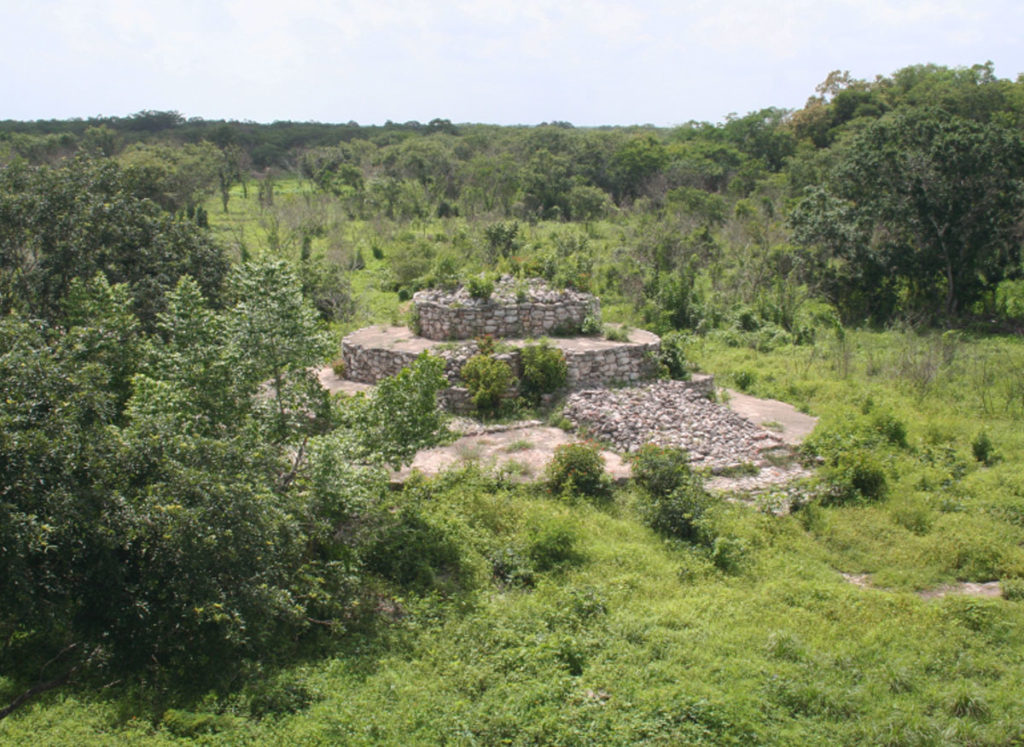
Toward the core of the site, there is a large plaza that would have been flanked by several large, imposing buildings. However, centuries of neglect and looting have rendered the remains of these structures a pale shadow of their former glory. Look along the base of these platforms, and you will notice many decorative elements that hint at the lost greatness of these buildings.
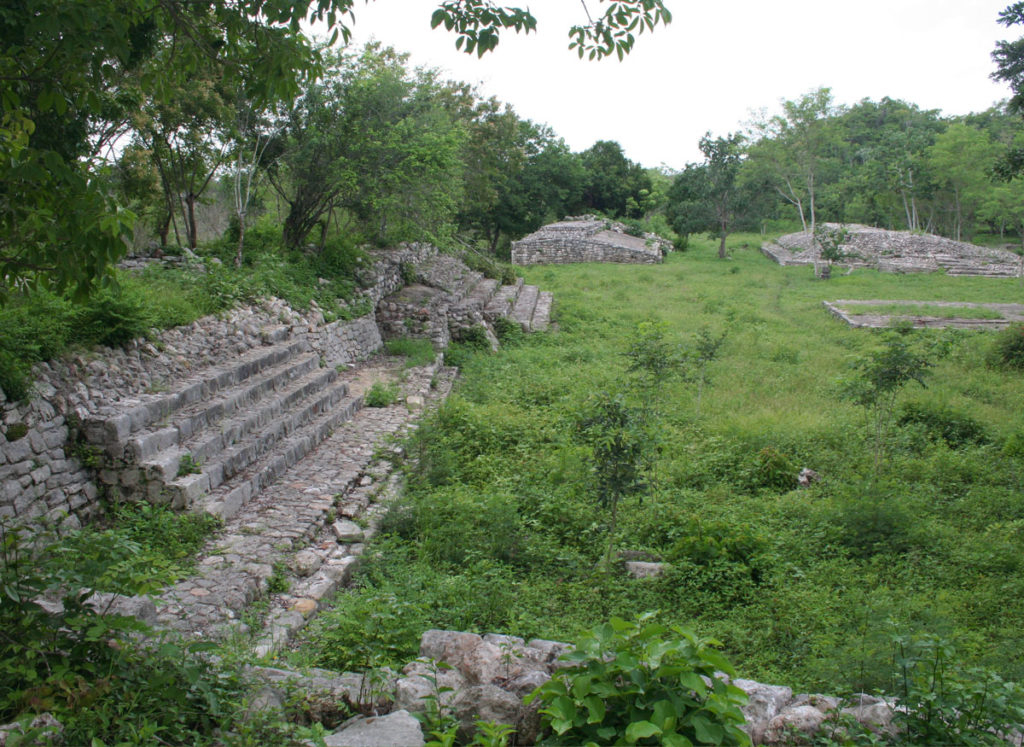
To the west of the plaza, you will find a large pyramid. If you like you will be able to climb it for a truly awesome view of the site. But remember that structures at Yaxuná do not really ever receive maintenance, so if you do decide to climb, be extremely careful.
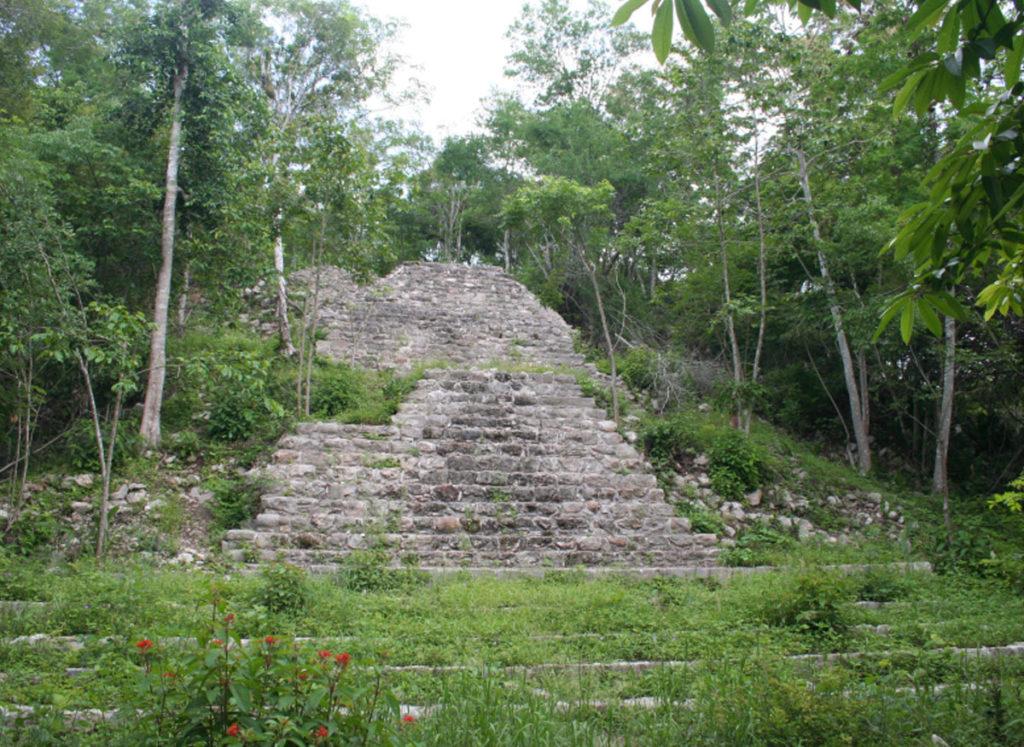
Like many Maya cities of Yaxuná’s period, the city has a Mesoamerican ball court. But as is often the case with ball courts, its two rings and most of its decorative elements are missing.
Due to its lack of visitors and relative isolation, Yaxuná is also fantastic for spotting wildlife. The grounds are particularly good for birdwatching and deer sightings.
